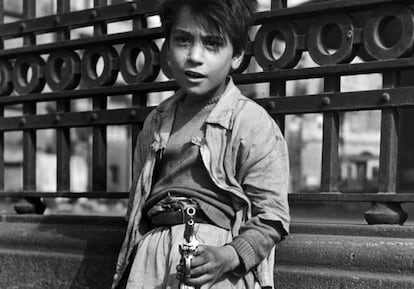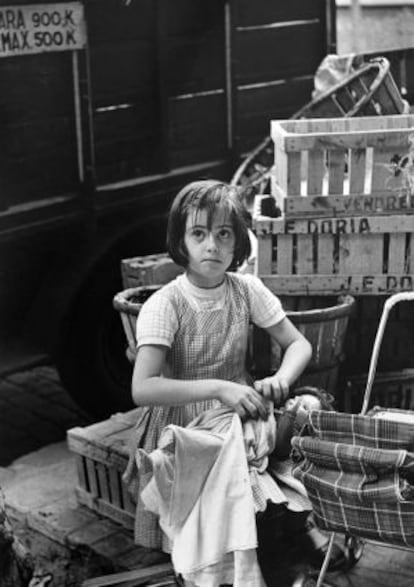Photographer who paid a debt of honor
Francisco Ontañón never forgot his origins in the poverty of postwar Spain

The exhibition Más que niños (or, More than children), currently on display at the Royal Palace of La Granja, close to the historic city of Segovia, portrays the Spain of the 1950s and 1960s: dark, harsh years when much of the country had barely emerged from the devastation and misery of the Civil War.
The man who took the photographs, Francisco Ontañón, and who died in 2008 at the age of 78, knew his subject well: he was just six when his father was killed fighting for the Republican army in the Battle of the Ebro, and his mother died soon after, "from a broken heart," he often said. Like so many of his generation he grew up quickly - the hard way, earning money to support his brothers and sisters from odd jobs and working as a messenger in Barcelona. Ontañón was drawn to photography after delivering some bills to a photographic studio, buying himself a cheap camera and largely teaching himself, determined to take up the profession, which he did in his late twenties, moving to Madrid to work for Europa Press.

Ontañón always maintained a connection to his harsh early years through his work both as a press photographer (he joined EL PAÍS in the early 1980s) and in his own work. Throughout his career he repaid the debt to his origins by continuing to record the lives of ordinary people, portraying their suffering, as well as their dignity in the face of hardship and injustice. The small but impressive collection of images on show at La Granja illustrates powerfully his sense of photographic honor.
Más que niños. Until December 16 at arteSonado, C/ Rey 9, La Granja de San Ildefonso. www.galeriartesonado.es
Tu suscripción se está usando en otro dispositivo
¿Quieres añadir otro usuario a tu suscripción?
Si continúas leyendo en este dispositivo, no se podrá leer en el otro.
FlechaTu suscripción se está usando en otro dispositivo y solo puedes acceder a EL PAÍS desde un dispositivo a la vez.
Si quieres compartir tu cuenta, cambia tu suscripción a la modalidad Premium, así podrás añadir otro usuario. Cada uno accederá con su propia cuenta de email, lo que os permitirá personalizar vuestra experiencia en EL PAÍS.
¿Tienes una suscripción de empresa? Accede aquí para contratar más cuentas.
En el caso de no saber quién está usando tu cuenta, te recomendamos cambiar tu contraseña aquí.
Si decides continuar compartiendo tu cuenta, este mensaje se mostrará en tu dispositivo y en el de la otra persona que está usando tu cuenta de forma indefinida, afectando a tu experiencia de lectura. Puedes consultar aquí los términos y condiciones de la suscripción digital.
Últimas noticias
Reinhard Genzel, Nobel laureate in physics: ‘One-minute videos will never give you the truth’
Pinochet’s victims grapple with José Antonio Kast’s rise in Chile
From digital curfews to blocking apps: How technology experts protect their children online
Why the price of coffee has skyrocketed: from Brazilian plantations to specialty coffee houses
Most viewed
- Pablo Escobar’s hippos: A serious environmental problem, 40 years on
- Why we lost the habit of sleeping in two segments and how that changed our sense of time
- Trump’s obsession with putting his name on everything is unprecedented in the United States
- Charles Dubouloz, mountaineering star, retires at 36 with a farewell tour inspired by Walter Bonatti
- The Florida Keys tourist paradise is besieged by immigration agents: ‘We’ve never seen anything like this’








































